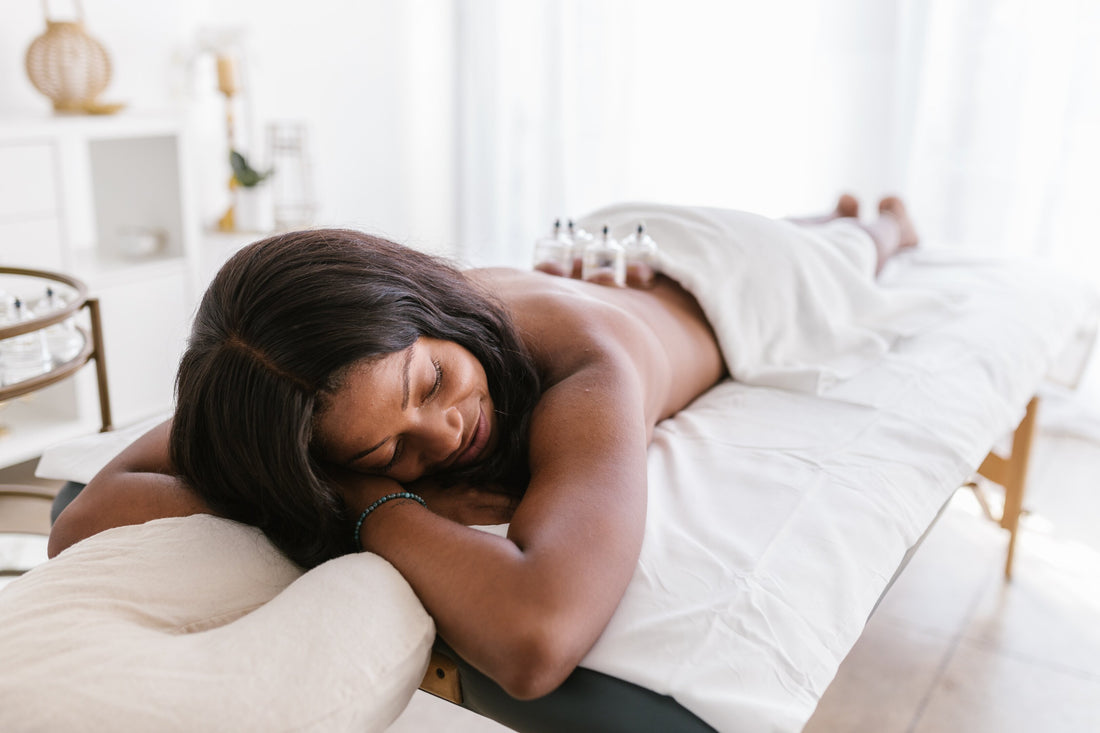
What is Cupping Therapy? (and What are the Benefits)
Cupping therapy is a traditional therapeutic technique that has been practiced for ages in many different cultures all over the world.
Cups are used in the therapy and are put on the skin to provide a suction effect. Suction aids in lifting and separating the skin from the underlying tissue, which can aid in boosting circulation, easing tension in the muscles, and relieving pain.
Glass, bamboo, or silicone cups are frequently used in cupping therapy. The cups are applied on the skin and a suction effect is created using a hand pump, a flame, or a suction gun. The cups can be left in place for a brief period of time to several hours, depending on the ailment being treated and the desired results.
Numerous ailments, including headaches, anxiety, back pain, neck pain, and muscle aches, can be treated with cupping therapy. Additionally, it is utilized to strengthen the immune system, lower inflammation, and enhance circulation. Additionally, some people employ cupping therapy to enhance their general health and well-being.
Benefits of Cupping Therapy
Relief of muscle aches and pains
Muscle tension can be relieved, as can soreness and stiffness, with the aid of cupping therapy. Additionally, it helps enhance circulation, which can aid in delivering nutrients and oxygen to the muscles and speed up the healing process.
Reduced inflammation
By facilitating the body's elimination of waste and toxins, cupping therapy can assist to lessen inflammation. This can aid in easing pain and enhancing general health and well-being.
Boosted immune system
By enhancing circulation and the supply of oxygen and nutrients to the cells and tissues, cupping therapy can support the immune system. The body's capacity to fend off diseases and infections may be strengthened as a result.
Improve digestion
By stimulating the digestive system and boosting blood flow to the abdomen, cupping therapy helps digestion. This may assist in easing the symptoms of digestive issues like constipation and irritable bowel syndrome as well as reducing bloating.
Relaxation
People who are tense or anxious may find benefit from cupping therapy, which can help to relax the body and mind.
Side Effects
When carried out by a qualified and experienced professional, cupping therapy is generally safe. To reduce the risks, it is crucial to select a reliable doctor and pay close attention to their advice. Following therapy, some patients may develop minor side effects such as bruising or skin discomfort. Most of the time, these side effects are brief and go away on their own in a few days.
FAQs
Who should avoid cupping therapy?
When carried out by a qualified and experienced professional, cupping therapy is generally regarded as safe. However, some people should avoid cupping therapy or proceed with caution while thinking about it:
- Children: Children may be more vulnerable to the side effects of cupping and may also bruise more easily. Children under the age of 18 should normally not take it unless a doctor specifically advises them to.
- Women who are pregnant: Cupping therapy may not be safe for them because it could alter their uterus and potentially harm the growing fetus. Pregnancy is typically a time to steer clear of cupping therapy.
- People with specific medical conditions: People with illnesses like blood disorders, skin infections, or open wounds may not be good candidates for cupping therapy. Before beginning cupping therapy, it is crucial to address any medical issues with a healthcare professional.
How much does cupping cost?
Depending on the location, the practitioner, and the length of the procedure, the cost of cupping therapy may change. Although cupping therapy is normally not covered by insurance because it is typically considered an alternative or supplemental therapy, some insurance policies may cover it. To find out if cupping therapy is covered by your insurance plan, it is recommended to contact your insurance company.
How often should cupping be done?
The frequency of cupping therapy can vary based on the patient and any particular health issues they may have. While some people might benefit from routine cupping treatments, others might only require it occasionally.
Starting with a series of cupping treatments, spaced a few days or a week apart, is typically advised. The individual's needs will determine how many treatments they require. While some patients might only need a few treatments, others might need a lengthier course of therapy.
Depending on the patient's response to the treatment and ongoing medical requirements beyond the initial round of treatments, the frequency of cupping therapy might be changed. While some people may just require sporadic maintenance sessions, others may need to continue receiving frequent cupping treatments to preserve the advantages.
It is crucial to speak with a trained healthcare professional, such as a certified massage therapist or acupuncturist, to establish the ideal frequency of cupping therapy for your particular needs. They can evaluate your health and work with you to create a personalized treatment plan.
Conclusion
Using cups to create a suction effect on the skin is a traditional healing technique known as cupping therapy. The treatment has a lot of possible advantages, such as the reduction of inflammation, the easing of muscle aches and pains, and an improved immune system. When carried out by a qualified and experienced practitioner, cupping therapy is generally risk-free, but it's crucial to pick a reputable practitioner and strictly adhere to their recommendations to reduce the dangers.
